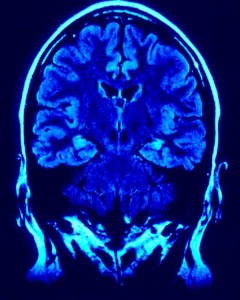 Back in April we reported that the government was looking at introducing defined limits for driving while under the influence of illegal drugs. But what drugs can you take and still drive safely? What effect do different illicit drugs have on your driving?
Back in April we reported that the government was looking at introducing defined limits for driving while under the influence of illegal drugs. But what drugs can you take and still drive safely? What effect do different illicit drugs have on your driving?
Whether you’re into cocaine, heroin, LSD, marijuana or antidepressants, if you drive after taking drugs you are one of an estimated 3.5-5% of the population that risks it at least once a year. In America a study was done in 2007 that found that 11% of drivers stopped on a weekend or nighttime tested positive. Add the likelihood of people driving after drinking on Friday night and weekends, and you can see how the risk of having an accident is significantly increased.
Another study in Maryland, USA, found that if you have taken drugs then drive, you are more likely to be seriously injured in a car accident. The study monitored drivers admitted to a Maryland hospital shock trauma centre and found that of those seriously injured in an auto accident 26.9% had traces of marijuana and 11.6% traces of cocaine.
Let’s break the drugs down into their groups and analyse the effects on driving.
Stimulants
You’d think that stimulants might make you more alert; they accelerate your central nervous system. But they don’t; they make your body struggle to retain focus and make judgements. Stimulants you might have come across include amphetamines, ecstasy (MDMA), mephedrone (MCAT), cocaine and methamphetamine. When you take a stimulant drug it first seems like it raises your awareness and heightens your senses, but then you can come down hard and that puts you at risk of falling asleep at the wheel.
While you are up, you are much more likely to be aggressive on the road and take more risks. You are likely to believe you are a much better driver than you really are. However, stimulants can make it much more difficult to concentrate on driving, they can make your vision blurry and even alter your perception about what is on the road and where it is (including creating hallucinations).
Cocaine use is also identified with poor decision-making and blackouts. Heavy users may even experience strokes and blindness due to narrowing of the blood vessels.
Amphetamines are particularly addictive and users are prone to also using other drugs like marijuana to mask the effects of coming down.
Depressants
The main depressant gateway drug is cannabis, marijuana, hash or weed (it’s all the same compound). Studies have shown that when THC (the active ingredient) is present in the blood, a driver involved in an accident is much more likely to have been the cause of it. The higher the level, the higher the culpability, in general.
Cannabis causes your body difficulties in reacting and responding. It reduces your attention span and increases your reaction times. It can cause involuntary muscle movements and reactions.
Driving requires you to be able to judge speed and distance, but cannabis affects your eye tracking and makes it much harder to perceive speed, read signs and judge your road position. It can also cause anxiety attacks and over-reaction. While it makes you feel more relaxed, the symptoms mask the extra effort your body has to go to in functioning on any level.
Cannabis users Are twice as likely to have an accident.
Opiates like heroin, codeine and methadone increase your risk of falling asleep at the wheel. They cause visual impairment and mental confusion, and slow down your reactions.
Hallucinogens
The most common hallucinogens are magic mushrooms, PCP, ketamine and LSD. You can also get hallucinations from ecstasy and cannabis.
Hallucinogens cause you to see things that aren’t there and not see things that are there – obviously bad for driving. They reduce your coordination and reaction time, impair your thinking and blur your vision.
What’s a safe level of drugs to use?
Basically there is no safe level of illegal drug use. The drugs are illegal for a reason: they adversely affect your body and cause lasting harm. Even though the government is setting maximum levels (which will be above zero), they are to cover trace levels, not ‘light usage’.
If you want to get high, make sure you’ve got a clean and sober friend who can drive you.
